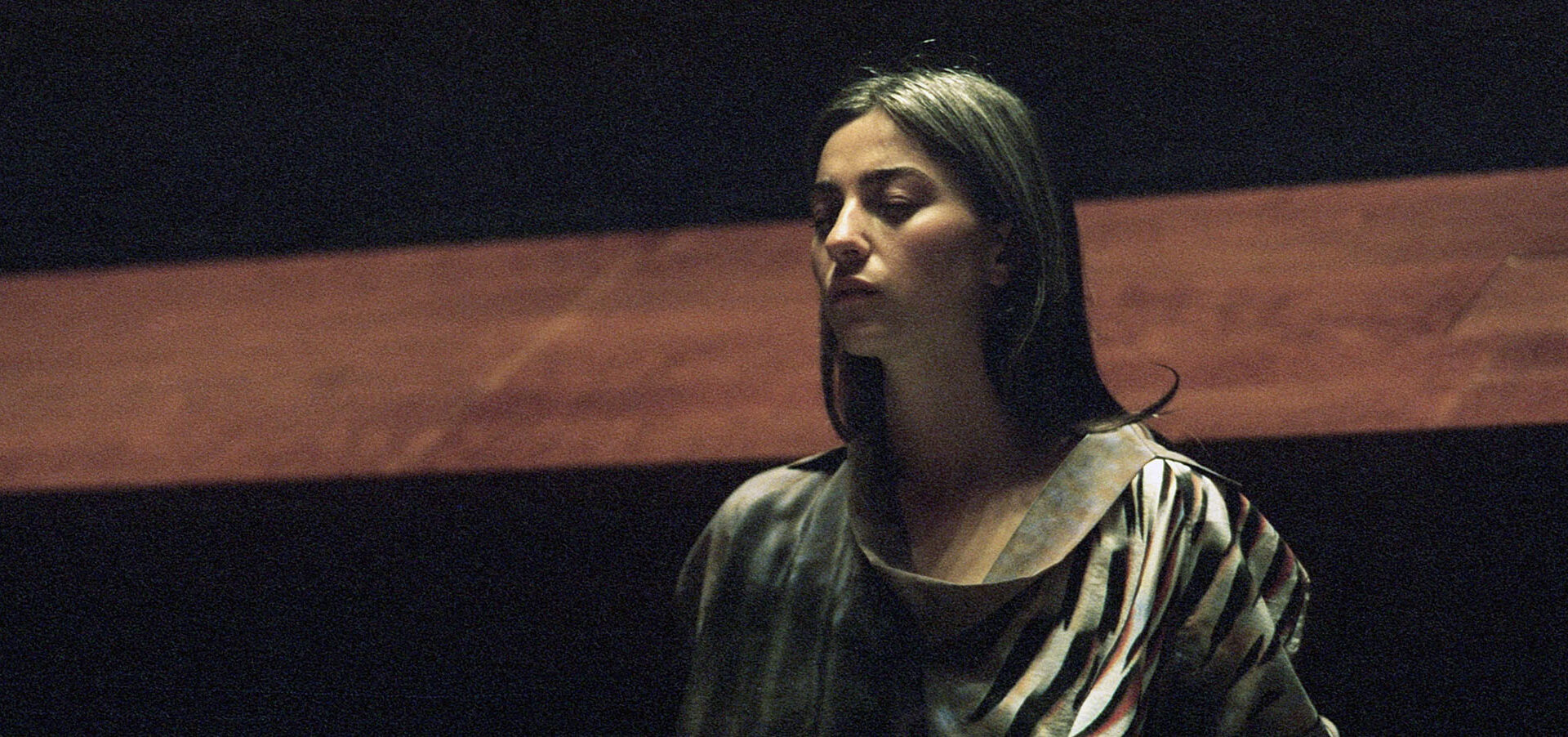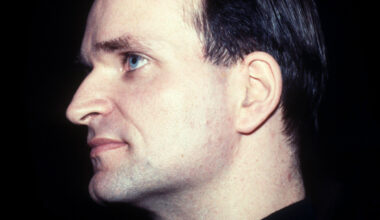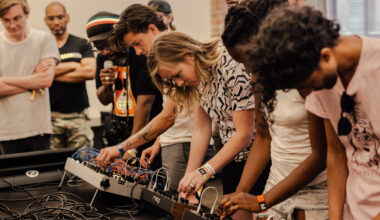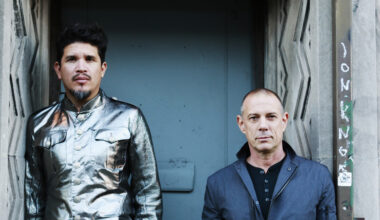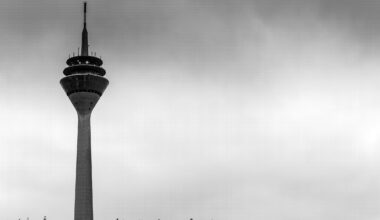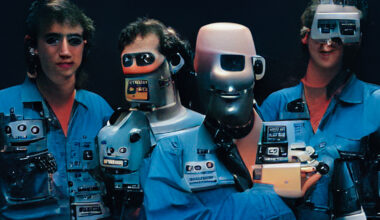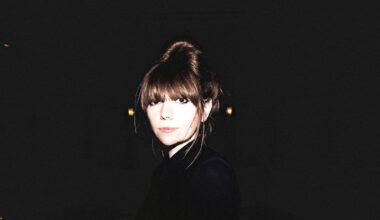Spatial audio has revolutionised the listening experience for over half a century, but what of its creative possibilities? Composers Max Cooper, Kali Malone and NikNak reflect on the potential of 4DSOUND, which is hailed as the world’s most advanced spatial audio sound system
In the words of modernist architect Le Corbusier, it promised to be “a work capable of profoundly affecting the human sensibility”. Bringing together “electronics, sound, noise”, this work would inhabit all corners of the structure built to house it. It was to be nothing less than “a new creation opening all before it”.
That structure was the Philips Pavilion at the 1958 World’s Fair, Brussels – an asbestos-coated concrete waveform made of nine hyperbolic paraboloids that seemed to burst out of the freshly tarmacked Belgian ground. Overseen by Iannis Xenakis, the work it enclosed was called ‘Poème Électronique’, an eight-minute piece by French composer Edgar Varèse, with grandiose names like ‘Man-Made Gods’ and ‘How Time Moulds Civilization’ accompanied by projections of light and colour.
Using a spatialised scheme devised by Varèse, it required many sound projectionists armed with rotary telephone dials to feed the music in and out of 400 speakers, sending squawks, honks and rumbles whizzing up and down the walls of the building. Le Corbusier was convinced it would change the world. Failing that, it would do a sterling job showing off advancements in Philips’ audio technology. The piece has endured, but the building was torn down the following year.
There is no parable in opening with this story, but it does illustrate that artistic engagement with spatial audio is nothing new. From Renaissance chorales to Stockhausen’s ‘Helicopter String Quartet’, surround sound to ambisonics, composers and designers have long tweaked the edges of modernity, experimenting and innovating with form to try and provide a more realistic, immersive or spectacular listening experience.
The latest addition to this canon is Amsterdam studio 4DSOUND. Built for a network of production studios and performance spaces, the 4DSOUND technology is part instrument, part sound system and part software, allowing composers to make sound objects that can be positioned and moved around a given space. Unlike many of its predecessors, the emphasis is as much on the creative potential for the composer as it is on the listener’s experience.
In April and May this year, 4DSOUND hosted a series of performances, workshops and diffusions (where music is presented or “diffused” through the spatial system) at Stone Nest in London. The residency provided an opportunity to hear the technology up-close and also to speak to some of the musicians commissioned to make work for it. Each installation is site-specific, and each has its own sonic peculiarities.
Stone Nest is no different. Built in 1888 and located next to a fire station on Shaftesbury Avenue in the heart of London’s West End, both the original Welsh Presbyterian church and Limelight nightclub that took its place in the 1980s made the most of its domed acoustics, heightening the sense of devotion and delirium that music could induce.
You could say that 4DSOUND’s intention lies somewhere between the two. Not much separates its dark, cavernous interior from the bustle of a central London streetscape. Noise leaks through. Sometimes sirens merge with the music. And yet the experience of stepping from one world into another is profound.
The night I visited, US composer/synthesist Kali Malone was performing. The audience was seated in a circle around a central speaker the size of a small fire extinguisher. People fanned out around it like ripples in a pond.
Around them, 32 omnidirectional speakers, four subs and six additional PA speakers were positioned in the alcoves and up towards the dome in an equally spaced three-dimensional grid. Some poked out of the ground, while others hung like bats in the rafters. As nodes of sound, they are designed to be inconspicuous.
Kali Malone’s work is perfect for spaces such as these. Her long-form drones and microtonal organ shifts seek out the material resonances of grand spaces. We were hearing ‘Carved Windswept In Stone’, a new composition made using 4DSOUND software, and an existing piece called ‘Living Torch’, originally commissioned for the loudspeaker orchestra, Acousmonium, about which we’ll learn more a little later.
‘Carved Windswept In Stone’, Malone tells me, was inspired by the natural spatiality of the pipe organ and was constructed from up to 30 recordings of individual pipes, pitches and air pressures.
“What I wanted to do was create columns using the 4DSOUND software to resemble the pipe structure within the space,” she explains. “I was also inspired by the forest and wind sounds occurring in nature, and so I took all these delicate air pressure recordings and spatialised them in the room as if it was a forest of pipes.”
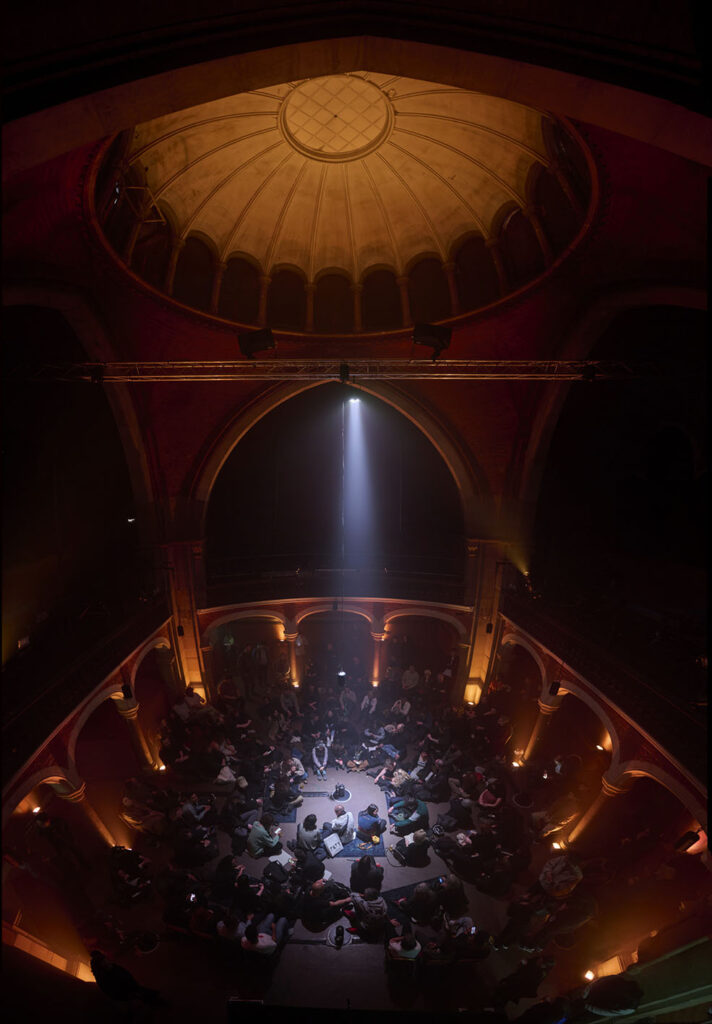
I’d been unaware of this at the time of the performance. As it began, I found myself working hard to locate the origins of the sound, to sense its spatial elements. I realised quickly, however, that this was somewhat easier said than done. With no focal point, I began to feel like I was no longer grounded in the physical space at all. I closed my eyes and let the sound wash over me instead.
“I think with 4DSOUND, what we do is create sound – it’s not even spatial sound per se,” says company co-founder, Poul Holleman, speaking from Amsterdam. “The magic of Kali Malone is that you are almost inside the organ. Her piece just exists in space. Sometimes it’s this thick, dense fog that is just everywhere, and then suddenly there can be something high up in the ceiling.”
As a form of playback technology, spatial audio has entered the lexicon of both consumer electronics and musical performance in recent years. A number of studios, venues and festivals now exist as outlets for it, from one-off performances to album playbacks. But Holleman is the first to admit that the term is a bit of a misnomer. Sound is inherently spatial.
“If you are in the street, at home, wherever you are, that’s how sound propagates,” he explains.
The devil, you could say, is in the diffusion.
Developments in sound reproduction have evolved in step with technology and, as such, early experiments in spatialising audio playback were largely channel-based by necessity. As in the Philips Pavilion, this was achieved by positioning speakers and routing audio to them, not unlike a telephone switchboard.
Perhaps the most obvious example is quadraphonics, which was generally considered the first consumer-ready foray into surround sound. However, the complexity of the set-up and a paucity of records to play on it proved to be stumbling blocks. New systems often need new formats to make them viable. When gramophones were first introduced to emerging markets, their makers had to send envoys to record enough local music to sell alongside them. The emphasis on creation is a key component of Holleman’s project.
In that sense, 4DSOUND is perhaps closer in spirit to the one-off experiments pursued by avant-garde composers in the first half of the 20th century. Charles Ives positioned his orchestra members apart from one another to give a sense of distance in performance, as Renaissance composers had done with choirs hundreds of years before him.
Karlheinz Stockhausen famously experimented with all manner of sonic manipulation. Meanwhile, Varèse, Xenakis and their contemporaries at the vanguard of musique concrète were revolutionising not only the classical form but laying the foundations for what we know today as electronic music.
The apotheosis of the channel-based era was the development of the Acousmonium by François Bayle at Pierre Schaeffer’s Groupe De Recherches Musicales in 1974. Consisting of 80 speakers placed like sentinels on and around the stage, it required musicians to diffuse their works across the array in real time. “Another utopia, devoted to pure ‘listening’… arranged with a view to immersion in sound, to spatialised polyphony,” wrote Bayle in 1993.
The Acousmonium is an awesome sonic (and visual) experience, but it labours under the weight of claims such as Bayle’s and remains in the rarefied corridors of experimental music. In the decades that followed, parallel technologies emerged, employing either “scene-based” audio, such as ambisonics, or the “object-based” audio of Dolby Atmos and ultimately 4DSOUND. These require a conceptual shift away from discrete channels and towards three-dimensional sound spaces, and have found their way into mainstream electronics and immersive cinema experiences.
“Dolby Atmos is the big player,” Holleman says. “They bring object-based audio to the masses.”
The technology is now embedded in your iPhone, but you may not even know it. In any case, this is not a space that 4DSOUND is interested in. Instead, it’s pursuing the creative potential of spatial sound for the composer as much as the “pure listening” experience of the audience.
“When we started, we really designed 4DSOUND as an instrument for live performance,” continues Holleman. “It’s a hybrid between a system and an instrument, but we tend to say it’s an instrument because it challenges you to dig in, to try stuff – it gives you something back. It’s an expressive thing.”
Premiering long-form work ‘Eternities’ at Stone Nest, Oram Award-winning composer and turntablist NikNak says that this approach has opened up the way she thinks about music making.
“Whenever I create something, I always have the possibility of it being made spatial in the back of my mind,” she says. “And so to create something from the start that was always going to be presented in an immersive way was very refreshing.”
It follows then that an awareness of physical space in composition can begin to shape how the music is conceived.
“I try to be careful not to overload the sonic space with sounds that maybe clash or might be too much all at once,” she explains.
“The way that you interact with that software is extremely artistic, not purely technical,” adds Malone.
The excitement for the composer is clear. For the listener, however, it demands a bifurcation of perspective.
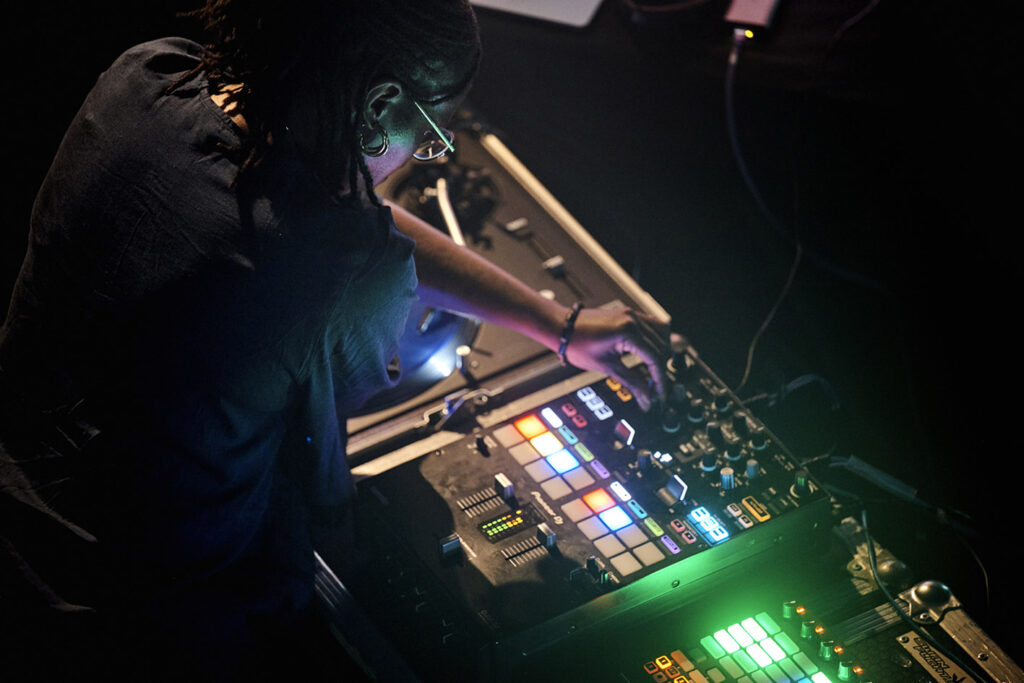
If 4DSOUND is both instrument and system, should we be listening to the music being played or the object playing it? A closer look at the technology itself offers some clarity. The omnidirectional speakers employed by 4DSOUND were developed by Leo De Klerk of Bloomline Acoustics, a maverick music technologist who passed away in 2020 having coined the term “the inaudible loudspeaker”. Seeds of this idea go back over 100 years, to a time when transparency was considered more important than volume in sound reproduction.
“What directional speakers do is create an energy beam of sound,” says Holleman, cupping his hands around his mouth to mimic the workings of a cone-based speaker.
“This distorts my voice.”
He takes his hands away.
“It’s different than when I do this.”
That difference is audible, even through a laptop. As a window does with light, so should the speaker allow sound to pass through it without obstruction. Focus too intently on the windowpane and everything behind it begins to look a little blurry.
“The other thing is that when sound is omnidirectional, you can orientate yourself in relation to the speaker and it doesn’t change,” continues Holleman. “One thing I thought while listening to NikNak on our system was that this is what ambient should be. It exists in the space and it becomes more tangible.”
Presenting two evenings of his MESH project at Stone Nest, producer Max Cooper has been working with 4DSOUND for over 10 years.
“Initially I was blown away by the extra immersion and power that music could take on in the spatial realm,” he explains. “But over time, I’ve moved more towards, ‘What meaningful human experience can I communicate to you via spatial sound, which I could not do otherwise?’.”
The maturation of Cooper’s work from spectacle to substance touches on something fundamental about this whole enterprise. It’s impressive to hear techno glitches scatter around Stone Nest at warp speed, but the possibilities of spatial audio should be far greater than just sonic fireworks.
“So much of our awareness of our place in the world comes from spatial audio cues,” continues Cooper. “But being visually dominated societies for the most part, I think we often aren’t aware of the role of spatial sound in our experience of being. When we start to play with those cues in a musical context, it can create powerful, visceral experiences which can heighten art and the messages that can be communicated.”
It was still light outside when I left Stone Nest, the sounds of central London as abrasive as they were when I went in. I wondered what this moment would have felt like for a visitor to ‘Poème Électronique’. Like Le Corbusier and Varèse before them, 4DSOUND and the artists it commissions face a conundrum. How do you transform a specialised auditory experience into an enduring, paradigm-shifting technology? I ask Holleman what he hopes the impact will be.
“If you go to a documentary about vegetarianism, when you walk out of the cinema, you are very conscious of what your position is in the world regarding that subject. I think and I hope that when people leave a 4DSOUND concert, they have a heightened sensitivity to sound and realise that there is a lot to explore in everyday life.”
In a context where opportunities for artists to innovate are scarce and the listening experience is compressed into oblivion, spatial audio is fighting the good fight, and there is no doubt that advancements in the technology are impressive. And yet it’s hard to shake the feeling that the idiosyncrasies of spatial audio systems like 4DSOUND represent both possibility and limitation.
“I think its potential for the creative process and the sensorial process is magnificent,” concludes Kali Malone. “But it’s hard to put a finger on what that is yet because there’s still so much space for it to grow.”
As was the case in 1958, how it does so remains to be heard.
4DSOUND is actively involved in various creative spatial audio projects, collaborations and residencies. For more information, see 4dsound.net
